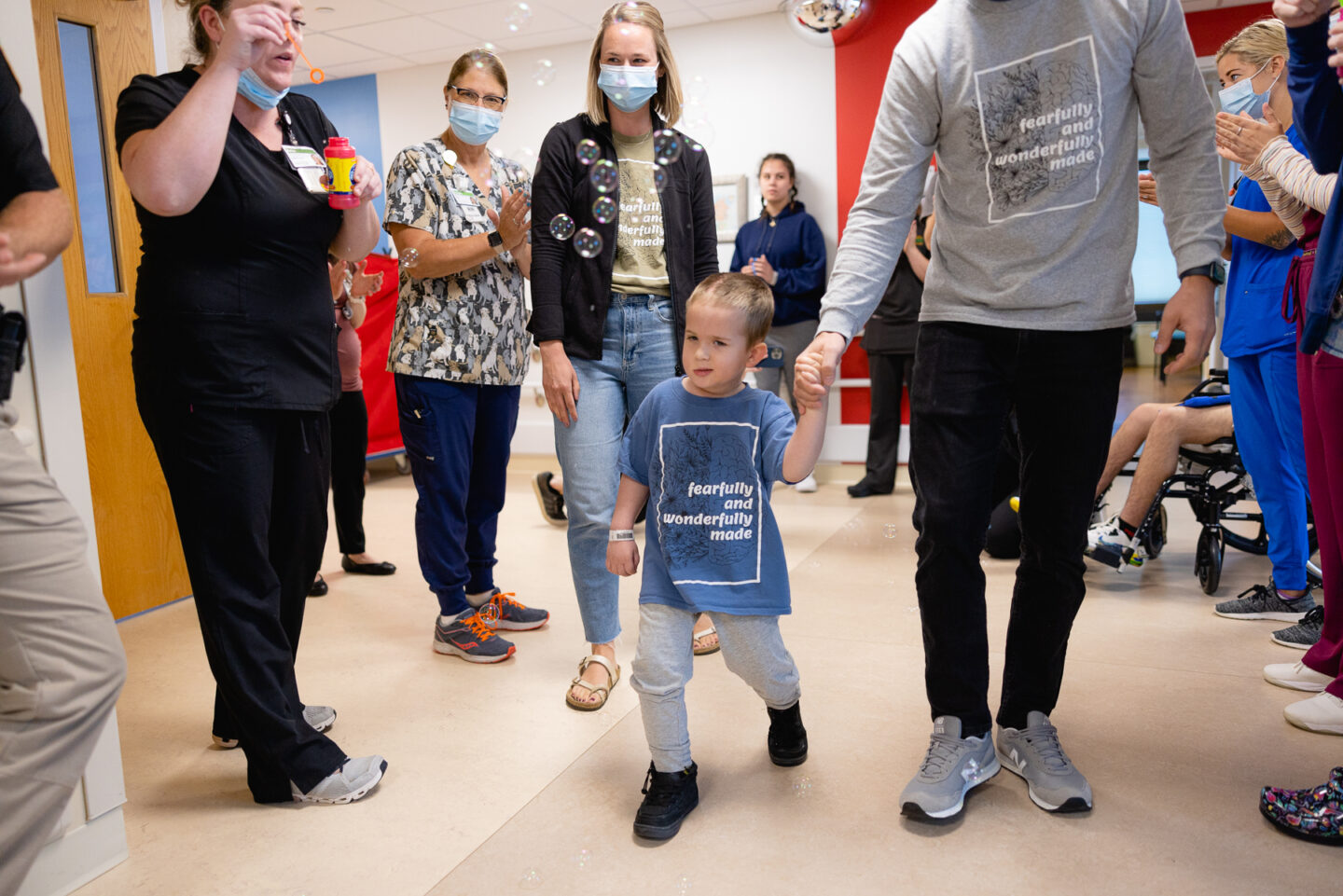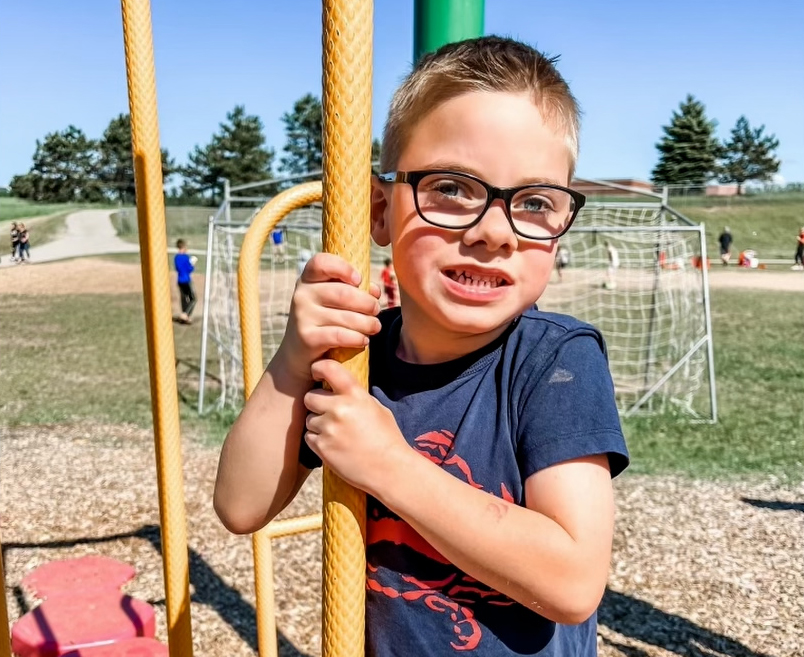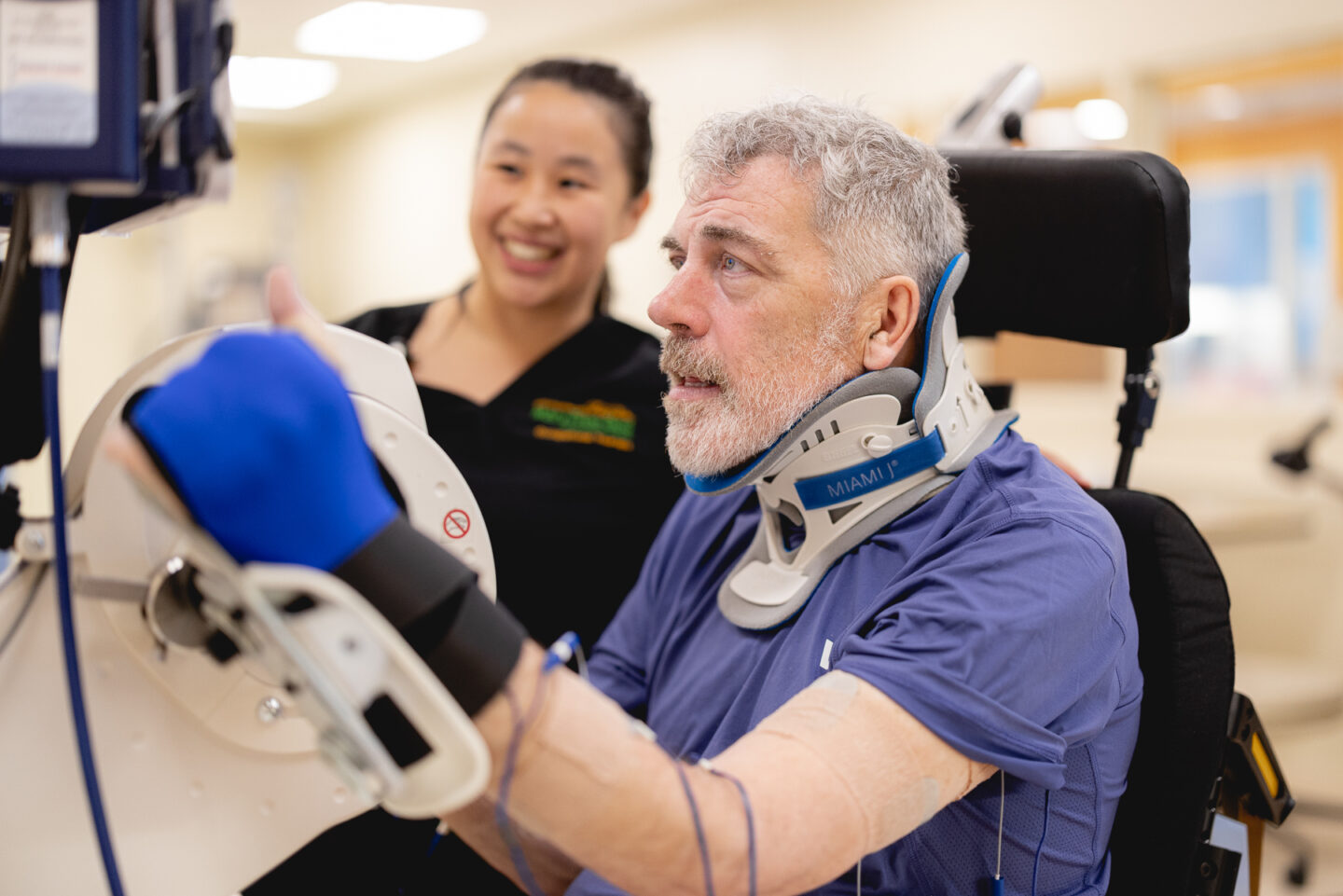Posted on July 9, 2011
Cancer survivor plays wheelchair tennis against able-bodied competitors
by Kate Snider
Jess Sporte, 23, lost her leg to cancer when she was just 4 months old. Jess uses crutches for short distances and a wheelchair for longer distances. She received outpatient care from the Center for Limb Differences at Mary Free Bed until she was 21 years old.
Growing up, Jess watched from the sidelines as her brothers and sisters played soccer. When she was 10 years old, Mary Free Bed introduced her to wheelchair sports camp.
“It was my first real experience with sports in a competitive environment where I was able to participate at the same level as everyone else,” Jess said
The camp sparked Jess’s love of competitive sports and she’s since participated in a number of adaptive sports, including basketball, downhill skiing, tennis, sled hockey, water skiing and wheelchair racing. She was able to do so with the help of Grand Rapids Wheelchair Sports Association.
“I really appreciate Mary Free Bed for all the opportunities they’ve given me,” said Jess. “They have provided me with opportunities I’d otherwise never have been able to afford. I love being able to play competitive sports, meet new friends and travel.”
When Jess turned 18, she transitioned from camper to counselor at the wheelchair sports camp. She also helps coach at the junior wheelchair tennis clinics.
“I teach them tennis techniques and help mentor others. GRWSA and Mary Free Bed promote mentorship among peers, to kids and with newly injured participants,” Jess said. “My mentors have changed over the years. As a kid, I was always aspiring to be like one of the adults from the GRWSA program who went on with their lives despite their disability.”
Now, as an adult, Jess focuses on wheelchair tennis. She competes in a local tennis league and plays against her able-bodied peers.
“One of the reasons I love tennis is because I can play with my friends, family, whomever,” she said.
The key difference between adaptive wheelchair tennis and regular tennis is that wheelchair tennis players are allowed two bounces. Wheelchair users can’t move laterally, so Jess keeps her wheelchair in constant motion while she’s playing tennis – she does tiny figure eights so she can get to the ball quickly.
Because Jess has a hip disarticulation (her leg was amputated at her hip joint), she needed a special wheelchair seat.
“It was hard to strap myself into any chair because I don’t have a stump to strap down on my right side,” she said.
Technicians from Mary Free Bed’s Orthotics & Prosthetics Rehab Technology Center were able to create a custom-molded bucket seat for her chair. The tighter fit helps her stay put while playing tennis.





